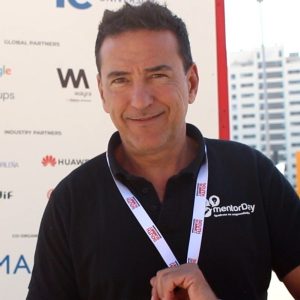TAMAÑO MÍNIMO EFICIENTE DE UNA NUEVA EMPRESA
Acelera tu empresa con estos consejos de expertos que cuenta sobre «Tamaño mínimo eficiente de una nueva empresa». ¡Analiza y descubre esta TIP!
El concepto de «Tamaño Mínimo Eficiente» (TME) se refiere al volumen mínimo de producción o nivel de actividad que una empresa debe alcanzar para operar de manera eficiente. En otras palabras, es el punto en el que la empresa puede aprovechar al máximo las economías de escala, minimizar los costos por unidad y justificar su inversión en activos fijos, como maquinaria, local, entre otros.
Factores a considerar:
- Modelo de Negocio: ¿Tu empresa produce bienes o ofrece servicios? Esto afectará el tipo de inversiones necesarias.
- Industria: las normas de tamaño eficiente varían ampliamente de una industria a otra.
- Costos Fijos y Variables: debes entender cuánto cuesta mantener tu negocio operativo independientemente del volumen de ventas, y cómo cambian esos costos a medida que escala tu negocio.
- Requisitos de Recursos: personal, espacio, equipo, y suministros necesarios para operar de manera eficiente.
- Demanda de Mercado: debes poder estimar con cierta precisión la demanda de tus productos o servicios para evitar sobreinversión o escasez de oferta.
- Competencia: conocer el tamaño y capacidad de tus competidores puede ayudarte a determinar un tamaño eficiente para tu empresa.
El número de clientes que hay que superar para que sea viable tu inversión
Ej.: no te compensará comprar, es decir, invertir en una máquina, si no puedes asegurar un uso en horas o clientes o productos superior a …. En ese caso es mejor subcontratar o alquilar
El tamaño mínimo eficiente de una empresa depende de varios factores, como el modelo de negocio, la industria, los costos fijos, la estructura de costos, los requisitos de recursos, etc. En general, la escala económica y el crecimiento pueden ayudar a una empresa a aumentar la eficiencia y reducir los costos por unidad, pero también pueden aumentar la complejidad y los costos administrativos. Por lo tanto, encontrar el tamaño mínimo eficiente requiere una evaluación cuidadosa de estos factores y una planificación estratégica.
Cómo calcularlo
En términos más cuantitativos, el TME se puede determinar realizando un análisis de costos en el que se calculen los costos totales (fijos y variables) en diferentes niveles de producción o actividad. Luego, se identifica el nivel en el que los costos por unidad son mínimos, siempre considerando que puedas vender la producción a ese nivel. ¡¡No confundir con el punto de equilibrio (+)!!
Es crucial no confundir el TME con el punto de equilibrio. El punto de equilibrio es el nivel de producción o ventas en el cual los ingresos totales son iguales a los costos totales, es decir, el punto en el que la empresa no tiene pérdidas ni ganancias. El TME es más un objetivo estratégico que considera no solo la viabilidad financiera sino también la eficiencia operativa.
EJEMPLOS PRÁCTICOS
Imagina que tienes una pequeña fábrica de zapatos. Podría no ser rentable comprar una máquina de corte de cuero de alta capacidad si sólo planeas producir 100 pares de zapatos al mes. Los costos de la máquina, su mantenimiento y el espacio adicional requerido podrían superar cualquier ahorro que obtengas al reducir el tiempo de corte del cuero. En este caso, podrías encontrar más eficiente subcontratar ese proceso o alquilar la máquina sólo cuando sea necesario.
En resumen, el TME es un concepto clave para cualquier empresa que busca maximizar su eficiencia y rentabilidad. Requiere una evaluación detallada de varios factores y una planificación estratégica cuidadosa.
Es difícil obtener datos precisos sobre el tamaño mínimo eficiente (TME) de empresas conocidas debido a que esta información a menudo forma parte de sus datos internos y estrategias competitivas.
SIN EMBARGO, SE PUEDEN HACER ALGUNAS OBSERVACIONES GENERALES BASADAS EN CASOS DE ESTUDIO Y MODELOS DE NEGOCIO CONOCIDOS:
- Amazon: cuando comenzó, Amazon era una librería en línea que operaba desde el garaje de Jeff Bezos. Sin embargo, con el objetivo de convertirse en la «tienda de todo», necesitaba un TME significativo para justificar y mantener su logística extremadamente eficiente, sus centros de datos y su sistema de inventario.
- McDonald’s: una sola tienda de McDonald’s puede no justificar una cadena de suministro de carne a gran escala. Pero con miles de tiendas, McDonald’s puede invertir en sistemas que le permiten comprar, almacenar y transportar carne de manera extremadamente eficiente, alcanzando un TME que justifica sus grandes inversiones en logística.
- Tesla: la fábrica Gigafactory es un ejemplo de TME a gran escala. La eficiencia y la reducción de costos en la producción de baterías solo se logran con un cierto volumen de producción que justifica la inversión multimillonaria en la fábrica.
- Netflix: para justificar el alto costo de adquisición de contenido y producción de series y películas originales, Netflix necesita un gran número de suscriptores. Aquí, el TME no se mide en términos de producción física, sino en términos de base de suscriptores.
- Walmart: Con su modelo de negocio basado en «precios bajos todos los días», necesita un gran volumen de ventas para mantener sus estrechos márgenes. Su TME es, por lo tanto, mucho más grande que el de una tienda minorista típica.
- Software como servicio (SaaS) como Slack o Zoom: Estas empresas tienen costos fijos relativamente altos en el desarrollo de software y la infraestructura de servidores, pero costos variables muy bajos. El TME será el número mínimo de usuarios pagados que justifique estos altos costos fijos.
Espero que estos ejemplos te ayuden a entender mejor el concepto del Tamaño Mínimo Eficiente en diferentes tipos de industrias y modelos de negocio.
La inteligencia artificial (+) puede ser una herramienta valiosa para un emprendedor que busca calcular el tamaño mínimo eficiente (TME) de su empresa. Aunque no es un reemplazo para el asesoramiento financiero profesional o el análisis de datos empresariales en profundidad.
AQUÍ HAY ALGUNAS MANERAS EN LAS QUE LA INTELIGENCIA ARTIFICIAL PODRÍA AYUDAR:
- Concienciación y Educación: puede ofrecer una explicación detallada de lo que es el TME, cómo se calcula y por qué es importante para una empresa.
- Elementos Clave para Considerar: puede listar los diversos factores que un emprendedor debe tener en cuenta al calcular el TME, como costos fijos, costos variables, demanda del mercado, capacidad de producción, etc.
- Fórmulas y Cálculos: aunque no puede realizar cálculos en tiempo real, puede proporcionar fórmulas generales y ejemplos de cómo calcular el TME basado en diferentes variables.
- Preguntas Dirigidas: puede hacer preguntas que guíen al emprendedor a pensar críticamente sobre su modelo de negocio, estructura de costos y proyecciones de ventas. Esto podría ayudar a recopilar la información necesaria para un cálculo más preciso.
- Estrategias de Escalado: puede ofrecer estrategias generales para alcanzar el TME de manera más eficiente, como la diversificación de productos, optimización de la cadena de suministro, o tácticas de precios.
- Validación de Ideas: mediante el análisis de respuestas del emprendedor, puede ayudar a validar o cuestionar suposiciones subyacentes en el cálculo del TME.
- Casos de Estudio: puede proporcionar ejemplos de empresas que han calculado y optimizado exitosamente su TME para ofrecer una perspectiva práctica.
- Recursos Adicionales: puede recomendar libros, cursos en línea, herramientas de software o consultores que pueden ofrecer un análisis más detallado y personalizado.
- Consejos para la Toma de Decisiones: puede ayudar a sopesar los pros y los contras de diferentes opciones para alcanzar el TME, lo que puede ser valioso para la toma de decisiones estratégicas.
- Checklist: finalmente, podría crear una lista de verificación que el emprendedor pueda usar como guía para asegurarse de que ha considerado todos los factores relevantes en su cálculo del TME.
En resumen, mientras que la inteligencia artificial no puede reemplazar un análisis financiero detallado, puede ser una herramienta educativa y de soporte muy útil en el proceso de entender y calcular el TME.
APLICA ESTE TIP EN TU PROYECTO
TAREA
CASO PRÁCTICO: EMPRESA XYZ EN EL PROGRAMA DE ACELERACIÓN DE MENTORDAY
CONTEXTO
La empresa XYZ desarrolla una plataforma de aprendizaje en línea especializada en habilidades de programación. Se incorporó al programa de aceleración de mentorDay para escalar su negocio y mejorar su eficiencia operativa. Uno de sus principales objetivos era determinar y alcanzar su tamaño mínimo eficiente (TME).
FASE 1: CÁLCULO DEL TME
PASOS SEGUIDOS:
- Análisis de Costos: estudiaron sus costos fijos (salarios, alquiler, software) y costos variables (publicidad, mantenimiento del servidor).
- Estimación de la Demanda: realizaron encuestas y análisis de mercado para entender la demanda de su servicio.
- Capacidad de Producción: evaluaron la cantidad de cursos que podrían producir y cuántos usuarios podrían manejar simultáneamente.
- Formulación y Cálculo: utilizaron la fórmula del TME basada en estos factores para determinar que necesitarían al menos 10,000 usuarios activos mensuales para operar de manera eficiente.
FASE 2: PLAN DE ACCIÓN PARA ALCANZAR EL TME
- Objetivo: alcanzar 10,000 usuarios activos mensuales en un año.
- Desarrollo de Producto: mejorar la plataforma con características más atractivas y una mejor experiencia de usuario.
- Marketing y Publicidad: invertir en campañas publicitarias enfocadas en redes sociales y búsqueda en Google.
- Alianzas Estratégicas: colaborar con universidades y escuelas para ofrecer sus cursos como parte del currículo.
- Optimización de Costos: renegociar contratos con proveedores y buscar alternativas más económicas.
FASE 3: IMPLEMENTACIÓN Y SEGUIMIENTO
- Trimestre 1: lanzamiento del nuevo producto y primera campaña publicitaria. Usuarios activos llegan a 3,000.
- Trimestre 2: primeras alianzas estratégicas establecidas. Usuarios activos crecen a 6,000.
- Trimestre 3: segunda ronda de optimización de costos y publicidad. Usuarios activos llegan a 8,500.
- Trimestre 4: inicio de alianzas internacionales y campaña de referencia. Usuarios activos alcanzan los 12,000.
FASE 4: REVISIÓN Y AJUSTE
- Después de alcanzar su TME, la empresa XYZ revisó su estructura de costos y estrategias, ajustando su modelo de negocio para mantener su posición estratégica a largo plazo.
RESULTADO:
Un año después de implementar su plan de acción, la empresa XYZ no solo alcanzó sino que superó su TME, posicionándose como un líder en su industria.
Así, a través de la participación en el programa de aceleración de mentorDay, la empresa XYZ pudo calcular su TME, elaborar un plan de acción sólido y ejecutarlo con éxito para lograr una fuerte posición estratégica.
QUIZ
- 💻 PRACTICA con un experto en el próximo webinar práctico.
- 🔎 CONSULTA más TIPs relacionadas con este mismo tema.
- 📖 AMPLIA tus conocimientos descargando este EBOOK.
PIENSA EN TI
- 🚀 IMPULSA tu empresa en el próximo programa de aceleración, ¡reserva tu plaza ya!
- 🥁 PRACTICA con tu proyecto en este webinar práctico, ¡solicita tu plaza!.
- 🌐 CONTACTA con otros emprendedores y empresas, ¡inscríbete y participa en el próximo Networking!
PIENSA EN AYUDAR A LOS DEMÁS
- 🤝COLABORA como voluntario: experto, mentor, inversor, premiando, difundiendo, retando, innovando, creando una TIP…
- 💬 RECOMIENDA este programa para que llegue a más emprendedores por Google.
- 👉 ¡COMPARTE tu aprendizaje!
- 📲 REENVÍA esta TIP 👇








